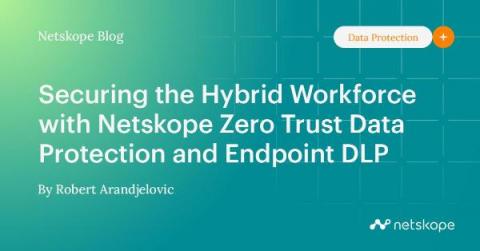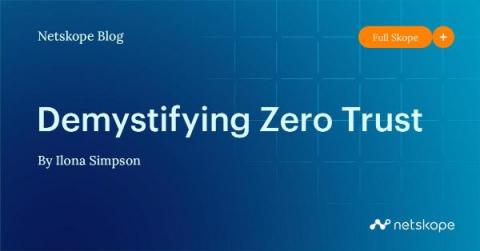Securing the Hybrid Workforce with Netskope Zero Trust Data Protection and Endpoint DLP
Data no longer resides behind the four walls of the traditional enterprise perimeter—it’s everywhere, and can be accessed from seemingly anywhere, thanks to the rapid embrace of cloud by enterprises and the acceleration of hybrid work, or work-from-anywhere, behind the global pandemic.









